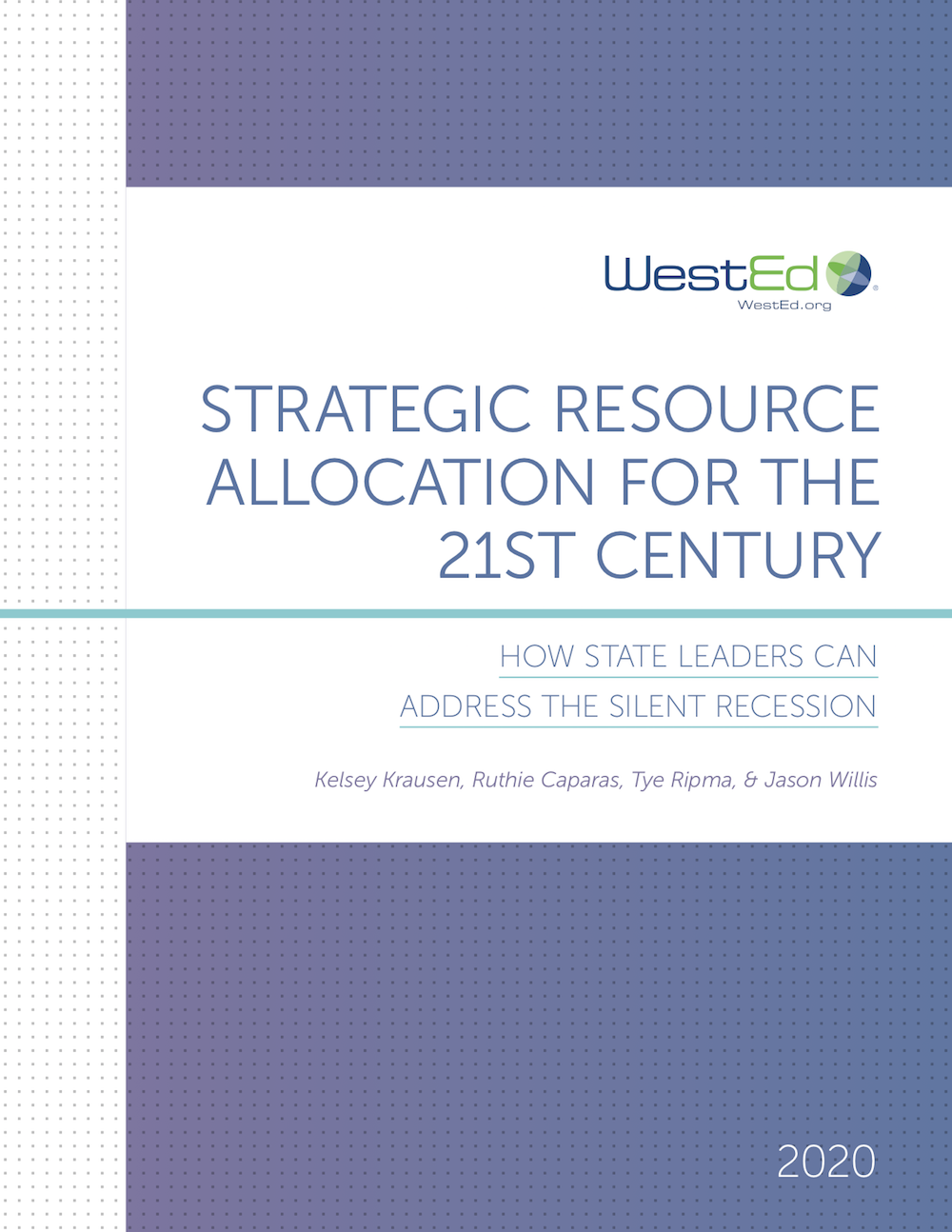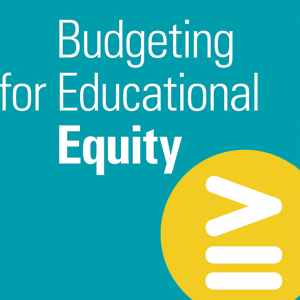Resource Allocation Reviews: Lessons Learned Over Four Years—Q&A With Alicia Bowman and Tia Taylor
Posted on

Today, state education agencies (SEAs) are at various stages of conducting ESSA-required resource allocation reviews (RARs) to support local education agencies (LEAs) that serve a significant number of low-performing schools. In this Q&A, RAR project leads with the Region 15 Comprehensive Center (R15CC), Alicia Bowman and Tia Taylor, talk about what they have learned over four years of working with states to create processes that enable leaders to examine the connection between resource allocation and academic outcomes.
Stay tuned next month, when R15CC will release detailed learnings from this work regarding how to design and implement RARs and identify resource inequities.
What are “Resource Allocation Reviews,” or “RARs”?
Bowman: The RAR, in essence, is a process, required by ESSA, to ensure LEAs are identifying and addressing resource inequities. That is, RARs look at how resources are currently being used, whether students who need support the most are receiving it, and whether changes to address inequities are effective.
Taylor: There are two major components in the improvement process to consider. The first is around resource allocation, which occurs during the planning stage, in which LEAs and schools that qualify for Comprehensive Support and Improvement (CSI), Targeted Support and Improvement (TSI), and Additional Targeted Support and Improvement (ATSI) must identify and address resource inequities in each respective improvement plan. The second is the RAR itself, wherein the SEA must conduct a resource allocation review of LEAs with a significant number of schools that are CSI, TSI, and ATSI.
You are coming out of an intensive 4-year RAR design process working with multiple states. What are some of the biggest lessons you have learned?
Taylor: One of the biggest learnings is that SEA leaders do not often give themselves permission to take time to design processes. We operate at a rapid pace where we feel like we must respond and react and create and deliver immediately rather than take the time necessary to create something meaningful and helpful for LEAs and schools. Our LEAs and schools are inundated with countless requirements. Oftentimes, adding more requirements draws valuable time away from teaching and learning initiatives. It is important to integrate the RAR into existing planning and review processes to limit the burden on LEAs and schools while at the same time enabling them to address resource inequities.
Bowman: A lot of existing structures can be used to support this work. For example, in Utah, as part of their system of support they offered collaborative meetings, called Equity Labs, to LEAs with significant numbers of schools in CSI, TSI, and ATSI status. They reviewed data, identified learning gaps, grew people’s foundational understanding of “educational resources,” and explored how to better use existing resources to improve outcomes for students.
I would add that there is not currently a universal definition of what we mean by “resources.” People think about “resources” as primarily financial or simply as “people, time, and money.” Resources are so much more. To do this work well, the RAR must be implemented across the entire agency, not just one department or division like fiscal or federal programs. Each department needs to work together. Everyone allocates resources. Establishing a shared understanding of what we mean by “resources” and “resource inequities” is an important starting point for this work—not just for the RAR team but across the entire SEA/LEA/school system.
For example, recently I had a conversation about the concept of turnaround leadership. The realization was that to be a turnaround leader, you have to be really savvy with limited resources to address a lot of needs. Being able to make decisions so that resources are benefiting your students is a skill. A lot of capacity building needs to happen in this space.
Taylor: In every state where we have introduced the concept of “resources beyond funding,” the response we get is, “I never thought of resources in that way.” After going deeper into equitable resource allocation, we find many school leaders are onboard and would rather receive the resources they truly need versus the same resources the LEA tends to allocate year after year. Also, we are working with SEAs that very much want to be in partnership with their schools. For them, the focus is on establishing trust. There is definitely a will there, but SEAs are still trying to find their way through conducting the RAR as a conversation centered around support. On one hand, you must be the monitor and do the compliance work, but at same time you want to provide support and have people trust you enough to share their vulnerabilities and the areas in which they need help. Finally, I would add that SEAs need to develop a clear process for onboarding new SEA staff to the RAR.The field of education is prone to high turnover. Having a plan in place for new staff to be able to pick up and run with the RAR process is really important.
It is important to integrate the RAR into existing planning and review processes to limit the burden on LEAs and schools while at the same time enabling them to address resource inequities.
What did you learn from holding RAR webinars with SEA leaders nationally?
Bowman: I repeatedly heard that people felt some relief that everybody was grappling with the RAR, and nobody had answers. It is nice to not be alone in such uncertainty. It helped people feel more confident that they could make decisions, and although their initial decisions might not be perfect, they weren’t the only ones in that place—everyone was trying to get there. As they get more information, that confidence is growing.
Many of our SEAs are very small, with not a whole lot of people. It is great to open dialogue across states—now many are reaching out to each other.
Taylor: Something that came through in the feedback was that SEA leaders want to learn and grow together. The dream is to create space where we can share nationally some of the ways we have been able to identify and address resource inequities. LEAs and schools are doing really awesome things. How wonderful it would be to have a platform where our learnings can be shared.
Bowman: Right. Like, “Where are you actually getting the positive impact that you want?” “How can you scale that?” If we are having success in a particular area, how can we scale that to another area?” The RAR is a catalyst for many such conversations.
What is the ultimate promise of this work?
Bowman: The goal is to be able to see that resources are not allocated based on project or budget codes or allowable expenditures but are instead allocated based on student needs and blended and braided in ways so that students get what they need most—so that they are successful.
Taylor: I also hope to see the lack of financial resources no longer be an excuse for why students are not receiving the services and supports they need. The dream would be to get to a place where we can be very strategic and intentional in coordinating available resources within LEAs across schools, within states across LEAs, or perhaps even across relevant state agencies and community-based organizations to ensure all are receiving the available resources they need to thrive.
View the Resource Allocation Review Webinars At the Links Below
- ESSA Resource Allocation Review Discussion Series, Session 1
- ESSA Resource Allocation Review Discussion Series, Session 2
- ESSA Resource Allocation Review Discussion Series, Session 3
The Region 15 Comprehensive Center works with state education agencies and their regional and local constituents in Arizona, California, Nevada, and Utah to improve outcomes for all children and better serve communities through capacity-building technical assistance.
The contents of this post were developed by the Region 15 Comprehensive Center. The Region 15 Comprehensive Center is funded by a grant from the U.S. Department of Education. However, the contents of this post do not necessarily represent the policy of the Department of Education, and you should not assume endorsement by the federal government.


